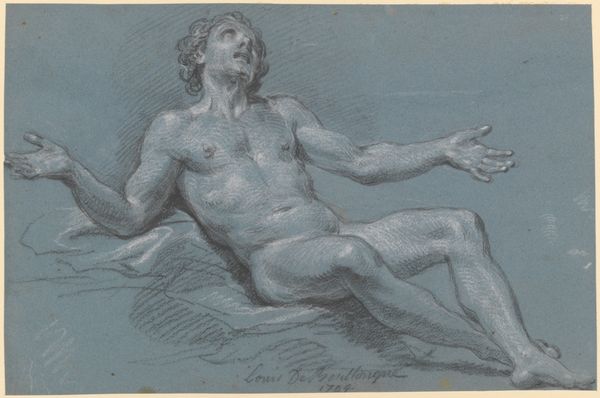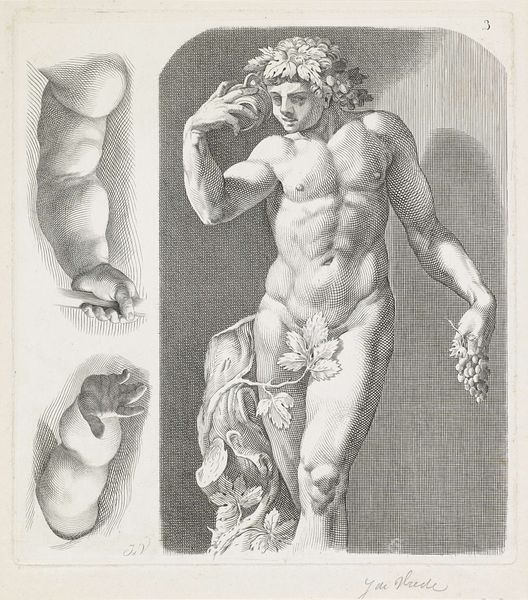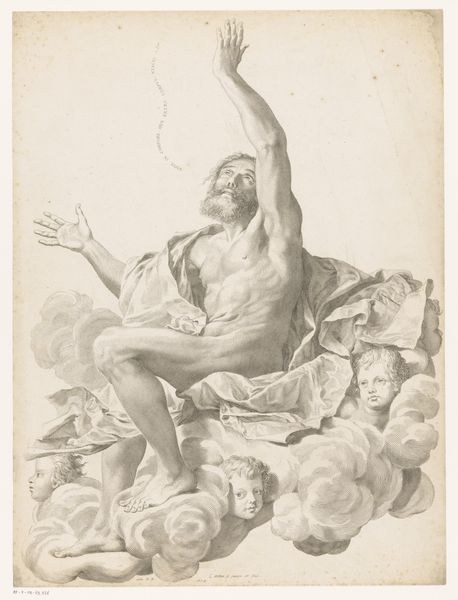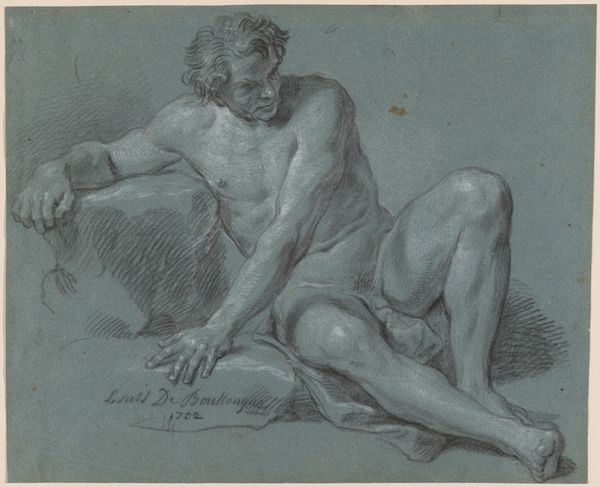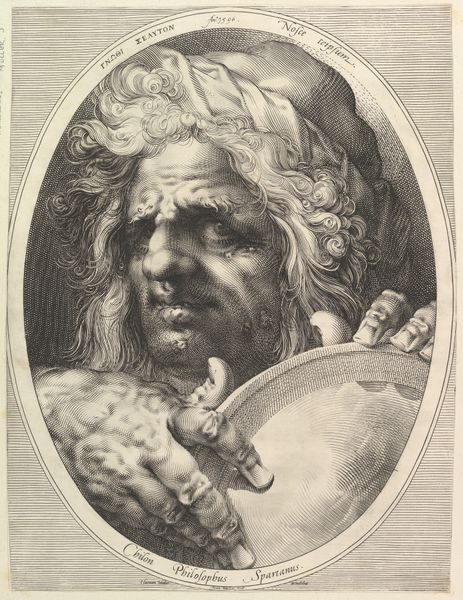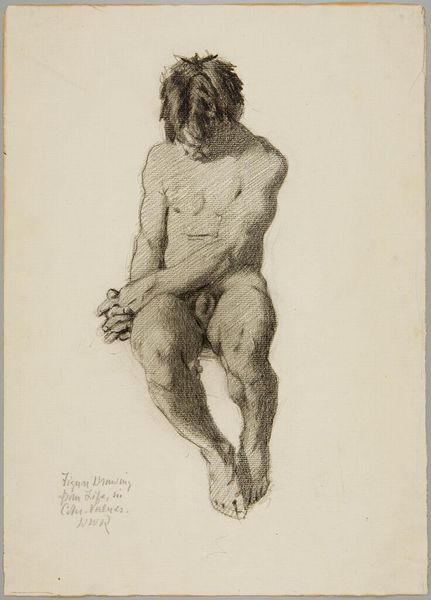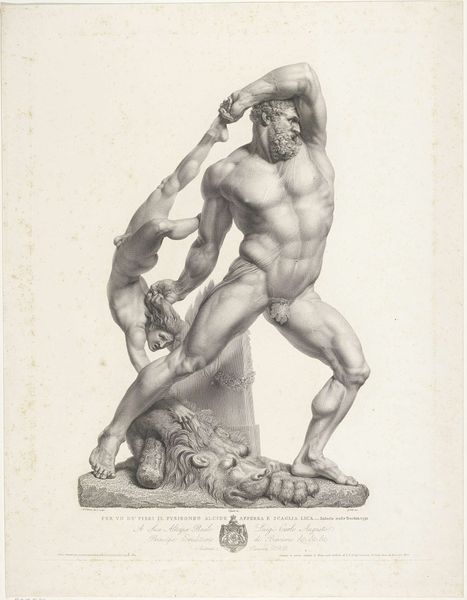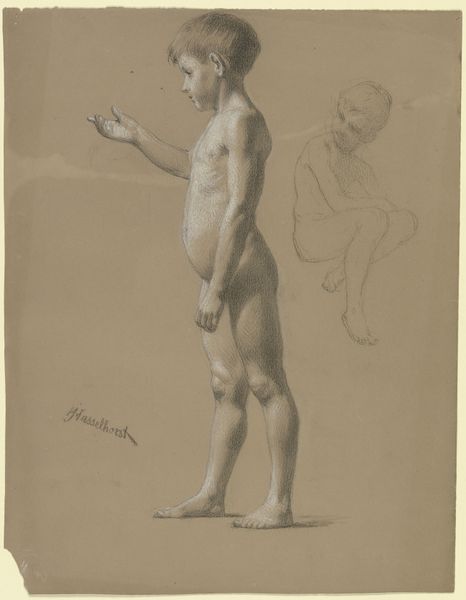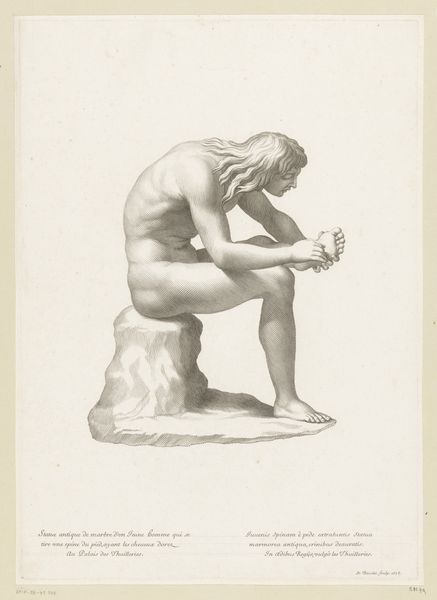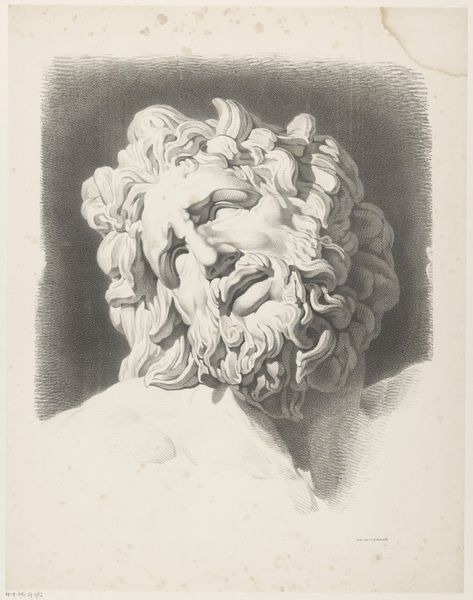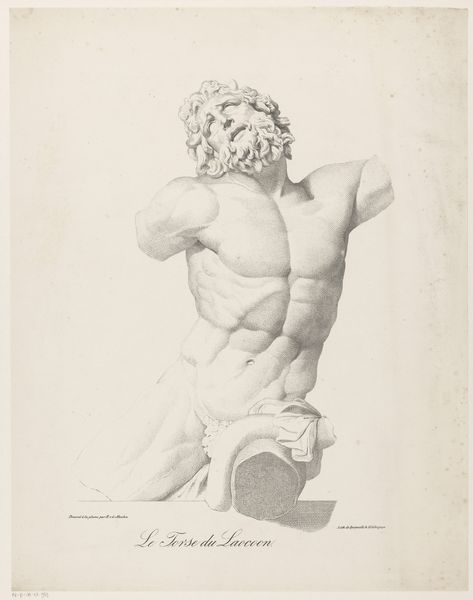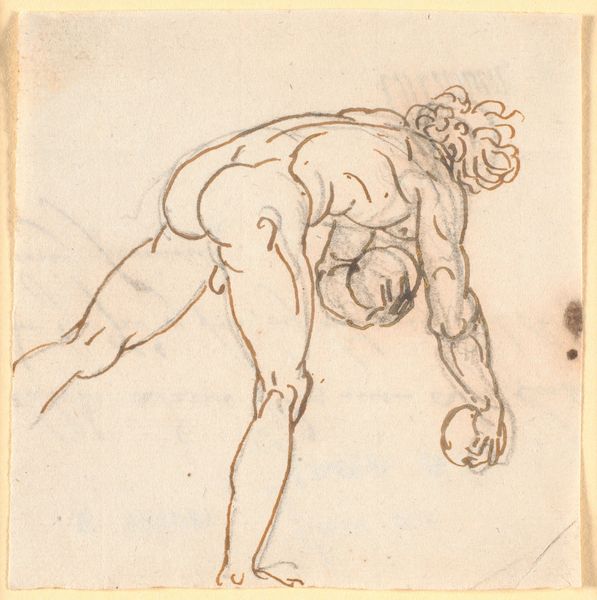
drawing, pencil
#
portrait
#
drawing
#
pencil sketch
#
charcoal drawing
#
pencil drawing
#
pencil
#
portrait drawing
#
academic-art
#
arm
Dimensions: height 245 mm, width 295 mm
Copyright: Rijks Museum: Open Domain
Curator: What strikes me immediately about Carel Christiaan Antony Last’s drawing, “Hoofd van een man, voeten, handen en armen,” created sometime between 1834 and 1850, is its intense focus on anatomical detail. Editor: Yes, there’s something almost clinical about the precision. It feels like a medical illustration, or perhaps a preparatory study for a larger work, but then, the portrait has such a soulful gaze! It’s rather unsettling. Curator: Well, that precision is part of the academic art tradition. It served a specific purpose for training artists. By focusing on rendering individual body parts, especially using a medium like pencil, it hones observational and technical skills crucial for representing the human form convincingly in more complex compositions. We must also not overlook that it challenges the boundary between "art" and study as commodities in art's marketplace. Editor: That makes sense. So, the drawing functions almost as a manual. I suppose the question that nags is, where would these studies materialize as a figure within the picture plane? I think the way the artist clusters them together generates a haunting quality. Curator: And don’t forget, the availability of pencils during this period – mass production was gaining momentum – impacted artistic practice. This artwork is dependent on material. Cheaper, more accessible drawing tools allowed for more experimentation and study. It lowered barriers to entry in the profession and broadened the consumption of drawings and sketches outside the realm of commissioned work. Editor: Absolutely, and you can really see the hand of the artist working through various planes and creating a remarkable tonal scale here. I feel a push-pull of dark and light in those lines! There’s a kind of drama being constructed. Curator: It raises a broader question about labor and art: how industrialization affects artistic production and whether art should be considered intellectual work. Editor: The artist wrestles to integrate these ideas! I’m captivated, nonetheless, by the emotion simmering within these drawings of human figures. It has truly sparked my thoughts on artistic method.
Comments
No comments
Be the first to comment and join the conversation on the ultimate creative platform.

